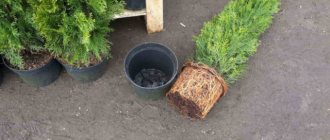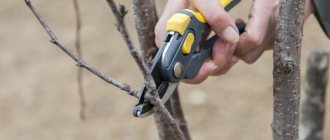Plants » Flowers
0
648
Article rating
Kira Stoletova
Irises are found quite often in garden plots. They are incredibly beautiful and are great for creating various compositions in flower beds and rock gardens. To preserve their decorative qualities, flowers need care, part of which is the need to transplant them to another place in the fall.
Irises - features of autumn transplantation
Why is replanting necessary and what will happen if it is not done? How often should irises be replanted?
Irises can grow in the same place for a long period, but in order for the plants to be healthy and produce beautiful large flowers, they must be replanted once every 4-5 years. Most of all, replanting is necessary for the reason that the roots of the iris are actively growing, and their obligatory division is required so that the plant does not die.
How to properly replant irises in the fall, video:
The bulbous root grows inward and above the surface of the earth, forming a kind of ring of bulbous segments. The stems and rhizomes become crowded, the number of peduncles and leaves decreases sharply, and the plant begins to die.
Preparing for winter
Irises are plants that are not afraid of winter frosts, so there is no need to resort to any serious insulation measures.
But in order for the shrub to successfully overwinter, it still needs to be given attention and undergo several procedures:
- The leaves are cut so that the height of the plant as a result of docking is about five centimeters.
- Roots that are above the ground must be covered, otherwise they may freeze.
- Prepared shrubs are covered with dry leaves, which are fixed, for example, with boards.
When to replant irises in the fall, timing of replanting to another location
When to replant irises in the fall, in what month? Is it possible to replant irises in September? September or the end of August is quite suitable for transplanting irises in the fall. By this time, the growing season is over, the plant is ready for division and transplantation procedures.
How to transplant irises to another place in the fall, and on what day is it better to do this? For replanting, you should choose a warm, windless day; the air temperature should be at least 12-15 degrees.
Despite the fact that irises are frost-resistant plants, replanting in cold weather should not be done.
Autumn replanting of irises in warm weather will allow the bushes to better and faster take root in the new area and prepare for spring.
When can you replant irises in the fall? It all depends on the region where irises are grown. The duration of their transplantation can vary around several weeks. The northern regions and the Urals prefer replanting in August, and in the south it is permissible to replant irises in October.
Transplant methods
Before transplanting irises, you need to familiarize yourself with the basic transplantation methods.
Technology for dividing bearded irises
The process of dividing flowers using this method is carried out in several stages:
- Digging. First, the plants are carefully dug up with a pitchfork or a small spatula.
- Cleaning from dirt. The dug up bulbs are shaken off and cleaned of adhering soil.
- Flushing. The bulbs are washed in a solution prepared from Zircon.
- Trimming. All irises are dried and carefully trimmed so that their height is 8-12 centimeters.
- Transfer. The trimmed bulbs are transplanted to a new location.
Transplanting Siberian irises
To replant Siberian varieties of irises, all bushes are carefully dug out of the flowerbed. Then the new area where the flowers will be planted is fertilized with organic and mineral fertilizers. After applying fertilizer, holes are dug at a distance of 40-45 centimeters into which the irises are planted. The transplanted flowers are sprinkled with soil and watered generously with warm water.
Dividing bulbous irises
To divide bulbous flowers, you need to dig up all the plants. Then the bulbs are washed with water, soaked for 10-15 minutes in a manganese solution and dried. After this, the dried young bulbs are separated from the old ones and transplanted to another place.
See also
Description of 30 types of perennial zinnia, planting and care in open groundRead
How to properly replant irises in the fall according to the lunar calendar?
Many gardeners prefer to find out the dates when they can plant irises in the fall from the lunar calendar. Indeed, the lunar calendar almost always takes into account natural cycles and makes it possible to grow high-quality flowers and fruits.
You can get acquainted with the dates of the lunar calendar for 2021 and 2021 at the link : https://orchardo.ru/41520-lunnyy-kalendar-sadovoda-2019.html
Transfer rules
If you follow the planting dates and its rules, next year the division is guaranteed to transform into a full-fledged, richly flowering bush. Additionally, a number of features of the cultivated variety should be taken into account.
Preparing the plant
The bush must be divided into plots
You can transplant Iris to a new place only after its leaves acquire a yellowish tint.
Some experienced gardeners sign with a marker the specimens that have been divided to prevent mistakes during the process.
In the fall, before events, the bush is not watered for 2-3 weeks. You should also refrain from applying fertilizers. Remove the rhizome from the substrate using a garden fork very carefully, first dig in the plant at a distance of 25 cm from the base.
Then they take it out of the ground, carefully shake off the remaining soil and leave it to dry. Only then is it allowed to separate into sections.
Additionally, the seed is treated with a fungicide or a weak solution of potassium permanganate to stimulate growth. When using the latter, the duration of exposure in the product is 20-30 minutes; the purchased composition is used according to the instructions on the package.
The leaf blades are cut, leaving ⅓ of the entire length so that they visually resemble a roof slope. It is not recommended to completely eliminate them, because even in autumn the process of photosynthesis occurs in them.
Soil preparation
The ideal option is to place flowers in a flowerbed that is well lit until noon. It would be a good idea if the snow melts in the selected area first and is not exposed to gusts of wind.
If the soil is heavy, before digging it, it is recommended to scatter a small amount of river sand over the surface; if the substrate is too light, then, on the contrary, clay is added to it.
It will respond with gratitude to the addition of superphosphates and potassium-based fertilizers to the soil in moderate doses before transplanting.
Nitrogen-containing fertilizers are only suitable for spring; they are strictly prohibited in the autumn, as they promote the growth of green mass and activate internal processes.
As a result, the plant will not have time to adapt to the cold and will weaken.
Ideally, site preparation should be completed a week before planting. During this period, the soil is watered abundantly several times.
Rhizome division
It is recommended to use a sharp knife during this process. Otherwise, there is a risk of incorrectly breaking the base and damaging the processes.
When dividing, be sure to leave at least one fan of leaves and several young buds on each segment. The root length should be no more than 10 cm.
Particularly long ones are shortened due to the fact that they will interfere with the transplantation process. The incision site is disinfected with ash or crushed activated carbon.
Landing in the ground
- In the middle of the planting hole (up to 12 cm in diameter) a small mound is formed.
- The prepared division is placed in the center so that the roots go down the mound and do not get tangled and do not look up.
- Fill the hole with substrate. The neck of the flower, like the upper part of the rhizome, should be above the surface. Do not forget that the earth tends to settle over time.
- Water in moderation.
When mass planting, the distance between them is determined depending on the variety. The gap is usually in the range of 10-35 cm. If the gardener does not intend to touch the Iris for a long time, the step is increased to 0.5 m.
How to properly transplant irises to a new place in the fall, features of transplanting different varieties of irises
Among the varieties of irises grown in Russia, bearded and Siberian varieties have become widespread. Bearded irises are those whose petals are covered with small hairs that look like a beard. Bearded varieties have several flower stalks that bloom in May and June. The beard has a brown or yellow tint.
Siberian iris has more greenery and smaller flowers that feature lilac and blue hues.
Different varieties of irises may have different transplant dates. For example, English irises are planted in a new place at the end of September, “danfora” can be planted even in October, and Dutch and Spanish ones - at the end of October.
Why do you need to replant irises?
Iris rhizomes tend to grow: every year one or two new divisions with a length of 10 to 12 centimeters appear. Since irises are most often planted in a bunch or in a row, the rhizomes take up more and more space, and the bush no longer has enough nutrition.
If you do not replant irises, they will grow too thick and degenerate.
As a result, the plant degenerates:
- fewer and fewer flowers are formed, they become small;
- the roots may end up on the surface of the earth, and the leaves may dry out;
- The iris's immunity weakens, and the unpretentious plant may begin to get sick.
Therefore, beautiful perennials need to be replanted at least once every five to six years.
Preparing the site and soil
Autumn transplantation of irises and the timing of preparation of ridges depends on the choice of planting site and the crops grown there.
After gardeners have decided on the choice of place for planting irises, they should begin to prepare the soil. The area must be dug up to a bayonet depth and mineral fertilizers applied. If the soil where the irises are planted is heavy, it is diluted with sand, compost, and lime.
In the case when the groundwater level is high, a drainage system is laid (expanded clay or broken brick can be used for these purposes).
Bearded irises especially do not like high humidity.
The size of the planting hole must correspond to the size of the planting material (tuber or rhizome). The distance between seedlings should be at least 25-30 cm, between ridges - 50 cm.
How to properly plant irises in the fall:
Transplanting bulbous irises
In Russian gardens, rhizomatous irises are more common, but bulbous irises are also found. Transplanting this variety is very similar to replanting other similar plants (for example, tulips).
Bulbous irises are often planted in groups
Procedure:
- The bulbs are dug up two weeks after flowering.
- Soak for an hour in a slightly pink solution of potassium permanganate.
- Dry in a well-ventilated area (but not in the open sun).
Iris bulbs do not tolerate waterlogging at all.
Planting material is stored until the end of August or September in a dark place, then planted in the ground to a depth equal to the height of three bulbs and at a distance of 10–15 cm. There is no need to water specially bulbous irises, as they do not tolerate even slight waterlogging and can rot. . There will be plenty of rain and morning dew.
Preparing irises for transplantation
How to plant irises in the fall? Propagation of irises is possible by seeds and division of rhizomes. New varieties are usually bred from seeds. When planting seeds, you should expect flowering no earlier than after 2 years. When dividing the rhizome - next year or the year after.
The structure of the iris rhizome includes links divided by bridges. Each link has a fan and a root, which must be divided so that each seedling consists of 2-3 parts.
Therefore, having dug up an iris, you should clear it of soil and carefully examine the places of the jumpers along which the division will be made. How to divide irises for replanting in the fall?
The rhizome should be cut with a sharp knife along the line of jumpers. Long and unhealthy roots of the seedling are completely removed. Leaves are trimmed at the tip, dry leaves are trimmed completely.
Those seedlings that are suitable for planting are placed in a weak solution of potassium permanganate for some time to remove possible parasites and prevent diseases.
After removal from the solution, the root is dried, and the cut areas are sprinkled with ash or charcoal powder. If it is not possible to plant the iris right away, leave it for several days.
Transplanting irises in autumn: timing and features:
If after pruning there are parts left without roots and greenery, plant them separately from the main bushes and water them. They can take root and grow into full-fledged planting material.
Features for different varieties
Bearded
Choose healthy plants for planting
One of the most interesting in appearance Irises. The contour line of their petals is covered with yellow bristles, which serve the function of attracting insects for pollination.
They are propagated mainly by dividing the bush, for which part of the overgrown green mass along with the rhizome is dug up with a shovel.
Afterwards, the segments are disassembled either by pulling them out by hand or using garden tools.
It is worth considering that each such division must have at least one one-year-old link and leaves.
The more of the latter, the better - the likelihood of forming a flower bud for the next season increases.
Additionally, it is necessary to trim the leaves by about ⅔ of the entire length and remove, if any, flower stalks. The delenka is also inspected for the presence of soft areas, which are cut out using a sharp knife. Subsequently, the seed is treated in an aqueous solution of potassium permanganate and dried for a couple of days in partial shade.
Siberian
The fundamental factors in replanting Siberian Irises are their requirements regarding the growing area.
- They feel comfortable in light shade near trees and bushes.
- They love water, but particularly waterlogged soil can lead to death. They are characterized by a powerful underground part, reaching a length of half a meter and acting as a pump for obtaining liquid.
- They do not need tying due to the elastic trunk, so it is permissible to place the plant in areas unprotected from the wind.
Flowers can survive in one place for up to 10 years. Transplantation is required if there is thickening. It is also carried out by dividing the bush, each segment of which should be placed at a sufficient distance from each other.
Additionally, rotted compost is added to the hole, and the substrate itself is improved - it is made more loose and the acidity level is normalized.
With a small number of cuttings, their temporary germination in separate pots is allowed, thus protecting the plant from freezing. If necessary, seedlings are brought indoors.
Bulbous
In addition to Irises, the underground part of which is represented by rhizomes, other varieties of this plant are also cultivated - xyphiums, junos, iridodictiums. All three have roots in the form of bulbs.
Without replanting, the bushes feel comfortable for 3-4 years, provided they do not grow too actively in breadth.
In terms of process technology, the chronology is identical to the standard one: the mother bush is divided using a garden fork and the segments are moved to the selected area.
Directly planting irises
Transplanting irises to another place in the fall, video:
Transplanting irises in the fall: how and when to plant? When the holes and seedlings are ready, you should begin replanting the plants. Make a small mound in the hole and lower the iris rhizome onto it. The seedlings should not be buried deeply; the upper part of the root should be level with the surface of the earth.
The roots are spread out to the sides and sprinkled with earth. Make sure that when planting, the roots of the plant are directed downward and not along the surface of the earth.
How to replant irises in the fall, video:
Planted irises are watered with sufficient water and mulched.
About care
Gardeners liked these flowers not only for their beauty and pleasant aroma, but also for their unpretentiousness. They do not require special care, tolerate drought, do not like stagnant water and feel comfortable in flower beds in winter, despite the fact that the rhizomes are practically on the surface.
Weeding and loosening of beds with irises is carried out as necessary. Orcas do not need special nutrition - fertilizers are applied once a year, on the frozen ground after the snow melts. Additional feeding will be needed if the plant slows down in growth. But this usually occurs from the 3rd year, when the rhizomes grow significantly.
If you keep these flowers in one place for a long time, they not only become smaller, but also lose their quality and also begin to get sick. Therefore, the optimal time to transplant irises is from the 4th year of life. Otherwise, the old (dying) rhizomes will clog the young ones, preventing them from developing.
Irises care
Pests and diseases of irises
Irises are plants that are relatively resistant to diseases and pests, but it is impossible to say that irises do not get sick at all. Most often, the iris develops putrefactive changes on the roots and leaves. This is facilitated by high humidity or proximity to groundwater.
If putrefactive formations appear, the plant is dug up, kept in special antiseptic solutions and laid to dry.
The dried iris should be transplanted to a new place in compliance with the planting rules.
Irises are also susceptible to heterospora blight, which appears as brown spots on the leaves of the flowers. The affected leaves are cut off and the irises are treated with copper sulfate. Cut leaves should be burned to prevent further spread of the disease.
It is also necessary to protect irises from pests - gladiolus thrips . Leaves affected by thrips have a diseased and limp appearance. You can get rid of them using the drug “Confidor”.
In addition to thrips, mole crickets also harm irises. It damages the roots, bulbs and gradually leads to the death of the flower. To prevent insects from attacking irises from underground, they can be covered with eggshells. In addition, planting marigolds next to irises will also repel the pest.
Rejuvenation of irises
Iris transplantation in the Moscow region and Siberia
Orcas take root so quickly that the month is not so important for planting them. The main thing is to pay attention to climatic features, and also choose well-drained soils with the presence of clay, ignoring sandstones.
When to transplant roses from one place to another
In the Moscow region, in the Urals, and in Siberia, they don’t really ask the question of when irises can be transplanted from one place to another. For flower growers in these regions, every warm month is good for working in the flowerbed.
Spring planting
It is better to prepare a new bed in the fall by digging and adding compost, humus, a little lime and bone meal. The bush can also be prepared from September. To do this, it is enough to cut off the new blades from the old rhizome and leave them in their place until spring.
Additional Information. If in the southern regions they begin planting at the end of March, then for central Russia it is worth focusing on the second half of April - the beginning of May. Those who have been working with irises for a long time have already noticed that May plantings bloom earlier than April plantings.
As soon as the soil warms up to the desired temperature, young bushes are dug up and transferred to a new place of residence. In case of return frosts, it is better to immediately sprinkle the fresh plantings with sawdust so that the roots are not damaged due to temperature changes.
Important! When planting in spring, it is recommended to plant several cuttings in one hole, forming its own mound for each cutting. At the same time, a hole with a diameter of 0.4 m is deepened to 15 cm. Gardeners who were transplanting flowers in the spring of 2021 admired their iris this year.
Spring planting
Summer plantings
Those who decide to propagate irises in the summer should begin the procedure in the second half of July or August, when the flowers on the bush wither. The rules for preparing the site, planting material and the work algorithm do not differ from those described above, but there are small nuances:
- the new area intended for transplantation is watered abundantly a few days before the main work;
- loosen the soil to a depth of 20 cm and add nitrophoska (80-90 g/sq.m.);
- the roots are buried in small holes just below ground level;
- the direction of the leaf fan is south, this will allow the plant to develop symmetrically;
- when filling the hole, part of the shovel is left protruding from the ground;
- Water the plantings with warm water so as not to injure the plants due to temperature differences.
On a note! The transplanted irises will not bloom this year, but they have enough time to take root thoroughly and prepare for the winter period.
Caring for iris after transplantation in autumn
Caring for irises after transplantation in the fall is not difficult or problematic. The main thing is that the plant does not rot due to the large amount of water. You should not water the seedlings frequently, otherwise rooting will not occur.
Iris care
If all the necessary fertilizers were added to the soil during planting, additional treatments and fertilizing in the fall are not required.
The soil around the seedlings needs to be loosened and cleared of weeds.
For the winter, irises are covered with straw, dry leaves, and spruce branches. With the onset of spring warmth, the shelter is removed and the ground is loosened.
Features of the growing season of irises
Annual replanting of irises in the fall is not required, but once every 3-4 years it is necessary to replant the plant to rid it of old roots. New roots will quickly grow. Without replanting, they stop blooming wildly already in the 5th year. This is especially important for varietal flowers.
Irises bloom from the second half of May to the end of June, depending on the variety and regional affiliation. But with the end of flowering, their growing season does not end.
The growing season of irises throughout the year is divided into several stages:
- With the onset of spring, as soon as the snow melts, they rapidly increase the above-ground part of the plant. Judge for yourself, in just a month and a half, from the first shoots they turn into lush green bushes and the first buds appear on them. It is for this reason that many gardeners advise against replanting irises in the spring. Indeed, for rapid growth during this period, they need a well-rooted underground part of the plant. It is preferable to plant irises in the fall.
- At the end of the flowering phase in early July, active development of the root system begins. During this period, new links are formed, on which young buds will appear by autumn. These are the ones that will bloom next spring. Therefore, if you decide to transplant irises, it is important to catch the moment when new links have grown, but there are no buds yet. Summer transplantation of irises is dangerous because the newly formed tender buds can be easily damaged. Despite numerous advice, it is still not worth replanting until mid-August.
- By the second half of August, the root system of irises ends the phase of active development. The young buds formed on the links have become stronger and are clearly visible to the naked eye. This factor is of no small importance when dividing a large bush into several small ones. From now until mid-October is the ideal time to replant and plant irises in the fall.
It's no secret that irises bloom magnificently if ideal conditions are created for them and the root system is well developed. Since the flowering period begins at the end of spring, it is quite natural that they need to create such conditions in the fall so that by this time the roots are stronger and well rooted.
Comment! Delenka, fan, layering, blade - this is what the planting unit of the iris is called. This is a single unit of rhizome, the length of which is 3–5 cm, and the diameter is 1–2 cm.
If you decide to replant irises in the spring, then most of the plant’s time and energy will be spent on strengthening and rooting the root system. There is no point in waiting for flowers this year.
If you follow the timing and rules for transplanting irises in the fall, in one season a bush will grow from a small seedling, which next year will produce good links that can be subsequently planted.
Some features of irises
Knowing some of the preferences of these plants, you will see that growing them is not at all difficult.
- Irises are very demanding regarding such indicators as soil moisture. Therefore, too frequent watering or groundwater located close to the surface can cause root rot. To prevent this from happening, flower growers advise raising the planting bed 10-15 cm above ground level.
- Irises do not like too frequent watering: it is enough to water them 2 - 3 times a week in dry weather. The rest of the time, you need to focus on the condition of the soil at the base of the above-ground part of the plant. If the soil is dry, then the flowers require moisture. And if the soil is moist and soft, then watering is not required.
- The roots are always located closer to the surface of the earth. This feature must be taken into account when planting and caring for irises. Weeds must be removed manually in a timely manner. Using a hoe or flat cutter can damage the roots.
You can learn when and how to replant irises correctly from the following video:
Preparing the soil for replanting
Before you start replanting irises in the fall, you need to choose the right place for the future flower garden. The composition of the soil, groundwater, and lighting greatly influence even such picky flowers.
Irises love sunlight very much. Especially in the first half of the day, the flowerbed should receive the maximum amount of sun. Remember where in your area the snow melts fastest in the spring. This is where irises should be planted in the fall. This will be the perfect place for an iris paradise.
It is advisable that strong winds also avoid the place for transplanting irises.
Unlike other garden flowers, irises love loamy, slightly acidic soil. If the soil is too dense and heavy, sand should be spread over the surface before digging. If the soil is light and sandy, then add a little clay. You can add a small amount of well-rotted humus and ash to the soil, provided that the soil is too acidic. It will be useful to add potassium fertilizers and superphosphates to the soil before transplanting irises in the fall.
Important! Fertilizers containing nitrogen stimulate rapid growth of green mass. Therefore, it is advisable to feed the flowers with them in early spring before the budding phase begins.
It is not recommended to add growth stimulants to the soil when transplanting irises in autumn or spring. In the fall, they will not allow the roots to fully prepare for the onset of winter. And in the spring, the root system, having given all its strength to the leaves, will become weak and defenseless.
It is advisable to complete all preparatory work approximately 7–10 days before the start of transplanting irises in the fall. In order for the soil to compact and take on the desired consistency, the area intended for planting needs to be watered generously 3–4 times. During this period, the loosened and fertilized soil will compact and settle. Now you can plant irises in the prepared area.
Preparation of planting material
When planning planting work, flower growers focus not only on such factors as the time of year. The main signal when it is necessary to replant irises in the fall so that they can better take root and take root is the condition of the foliage. As soon as the tops of the leaves begin to turn yellow, you must immediately begin replanting.
Advice! In order not to confuse the planted irises, you can write the name of the variety with a marker on the remaining part of the sheet.
An iris bush in need of emergency replanting should preferably not be watered or fertilized 2–3 weeks before planting. It is necessary to remove the rhizome from the soil only with a pitchfork and with great care. To do this, stepping back 20–25 cm from the base, you must first dig around the perimeter of the iris. And then carefully remove the roots from the ground. After shaking off the remaining soil, dry the planting material thoroughly. After drying, you can begin to divide the main iris bush into small sections.
At this stage, it is important to know how to properly separate small cuttings. It is highly undesirable to divide the bush for subsequent planting manually, without special tools. So, you can not only incorrectly break the roots into links, but also damage most of the young buds. All seed material will be hopelessly damaged and unusable. The separation must be done with a sharp, clean knife. When cutting, it is important to pay attention that on each separated root there is at least one “fan”, several young buds and a piece of root up to 10 cm long. The cut site should be immediately treated with ash, thus carrying out a kind of disinfection.
Too long lateral roots of irises need to be trimmed. Their length should be from 5 to 10 cm. Longer absorbent roots will interfere with transplanting irises.
Before planting seed in the prepared soil in the fall, it should be treated with potassium permanganate (light pink solution) or a fugicide. The roots are kept in potassium permanganate for about 20 - 30 minutes, in a disinfecting solution - according to the instructions on the package.
Important! Newly acquired rhizomes are also subject to mandatory drying and disinfection. Even if you bought them in specialized stores or were delivered by mail.
Iris leaves should be cut by 2/3. The shape of the cut should resemble the roof of a house. It is not advisable to completely cut off the leaves, since photosynthesis continues in them until frost. Irises of different varieties should be marked or labeled.
Transplanting irises in autumn
The process of planting irises in the fall is very simple and consists of only three stages. The main thing is to have the desire and a small area of prepared soil. It is advisable to plant flowers in dry weather.
- The planting hole for irises should not exceed 10-12 cm in depth. In the middle of the recess you need to form a small mound, 2-3 cm high.
- The trimmed section is placed on it. It is important that the absorbent roots seem to go down the mound to the bottom of the planting hole. Gently straighten out all the roots. Don't let them bend.
- And lastly, cover the roots with soil. Please note that when watering, the soil will settle by 1-2 cm. The root collar and a small part of the main root after shrinkage should be located above the ground surface.
Autumn work on replanting irises ends as usual - with moderate watering.
As you can see, there is nothing complicated about replanting irises in the fall. The main thing is to monitor the plants for two weeks after planting. Each planted section should stand strictly vertically, not leaning to the side.
The distance between planted flowers can vary from 10 cm to 35 cm. Why is there such a difference? When determining the distance you need, you need to consider:
- Plant variety.
- Height of flowers. Low-growing varieties can be planted closer to each other, tall ones - as far as possible.
- Frequency of transfers. If replanting irises is not part of your plans within 3 to 5 years, then it is advisable to increase the distance between the divisions.
The author of the video will tell you about the basic rules for planting and caring for irises for beginning gardeners:
Caring for irises after autumn planting
Provided that the autumn turns out to be warm and does not indulge in heavy rains, the planted irises should be watered after three to four days.
Caring for irises after planting in early autumn involves timely weeding. It is important to consider that the roots are shallow, and in order not to touch them, it is better to remove the weeds manually.
After transplanting irises in the fall, it is important to monitor the decreasing air temperature. When frost approaches, it is advisable to mulch them with dry leaves, peat or spruce branches. In the Siberian region, mulching is mandatory. At the first opportunity, as soon as the snow melts and there is no threat of severe morning frosts, the mulch layer must be removed. No more care is required for irises in the fall after transplantation. Mother Nature will do the rest. The first spring rays will warm the roots and soon the first green arrows will appear on your site.
Important! When transplanting irises, the soil should not be fertilized with manure. Not only do they not like this type of fertilizer, there is a high probability of burns to the root system and root collar.
If you follow simple planting and care rules, irises gain color in the spring. During the summer, they build up an excellent root system. But you can divide and plant the root only in the second year after planting.
Despite the fact that irises are easy to care for, they should still be replanted every 3-5 years. This way you will protect them from degeneration of varietal characteristics. Moreover, adherence to planting dates will allow you to maintain the root system in excellent condition. And thanks to it, at the end of spring, irises will delight you with lush blooms and a delicate aroma.
Landing technology
Bearded and beardless varieties are very similar in planting technology and subsequent care - they are bred using roots or seeds.
In the second year, the root system already allows a single division.
For 4-5 years, she simply requires it, otherwise the plantings become thicker and the quality of flowering deteriorates greatly.
Propagation by roots
A well-grown healthy bush is selected for division. A month before transplanting, they stop fertilizing it, and watering is reduced by half.
To obtain planting material, you need:
- dig around the bush around the perimeter;
- carefully pull it out without tearing off the small roots;
- dry;
- using a sharp knife, divide into segments, each of which will contain a root section of at least 10 cm, a fan of leaves, several dormant buds;
- cut leaves to 13 lengths;
- Treat the cut areas at the root with crushed coal;
- as an option, disinfection is carried out with ash or a manganese solution;
- if a part of the rhizome without leaves is intended for planting, it is first kept in the sun (2-3 days) to improve growth;
- a mound is formed in the middle of the hole, lifting the rhizome above the ground;
- the bush sits on a hill, the feeding roots spread along its slopes;
- neighboring plants are planted no closer than 15 cm, large varieties require a distance of 45-50 cm;
- bulbous species are buried no more than 12 cm.
It is worth considering: if you need to quickly breed a variety, you can use small fragments of rhizomes without leaves.
For good growth and abundant flowering, new bushes are planted with the rhizome facing south. This factor must be taken into account when planning the size of the flower garden.
The plant is planted correctly if the fan of leaves is strictly vertical, the root part and neck protrude slightly from the ground. After 2-3 weeks the plant should take root confidently.
Growing from seeds
Rare varieties are grown from seeds
Sometimes you want to plant some special variety that your neighbors and friends don’t have. Such plants are ordered online or purchased in specialized stores. There they are sold mainly as seeds. The process will take longer; flowering will have to wait 2-3 years.
Marsh, Siberian, varietal, and Japanese species are grown from seeds. The disadvantage is the possibility of cross-pollination and disruption of parental characteristics.
Externally, the seeds are large and brown. They ripen for 2-2.5 months in seed pods after flowering.
Autumn sowing is preferable, because when storing seeds, their germination rate quickly decreases.
The timing is not important, the main requirement is at least 3-4 weeks before the first frost.
- The beds are prepared in advance at a distance of 20-35 cm.
- The seeds are buried 2 cm, covered with fallen leaves, mulch and a double layer of geotextile.
- The seedlings are transplanted to a permanent location in the spring, after the soil has warmed to +15 degrees.
Standard care in summer consists of weekly watering, fertilizing 3 times per season and regular weeding.
Information: it is unacceptable to use manure in any form.
Site preparation
Irises are suitable for a sunny area
When choosing the optimal location for a flower bed, it is worth remembering that irises cannot live without the sun. In shaded areas they will not bloom or will quickly degenerate into inconspicuous inflorescences.
But their moisture needs are different and depend on the species. Swamp iris thrives in damp areas, but this is rather an exception to the rule.
These flowers tolerate a lack of moisture much easier than its excess, so they are often planted on hillocks or artificial hills.
Proper planting guarantees abundant flowering for 4-5 years, until the bush grows excessively.
General requirements for the site:
- it is open and sunny, protected from the wind;
- deep groundwater;
- lack of close proximity to fruit trees;
- fatty nutritious loams are desirable;
- low or neutral soil acidity.
To prepare for planting, the soil is dug up with compost or humus with the addition of wood ash. If the composition is poor, then potassium-phosphorus fertilizers must be applied. It is better to leave nitrogen complexes for the spring.
In the fall, the plant should take root, not grow.
Please note: the root system of irises is located very close to the surface, so the depth is calculated based on the size of the bulb or rhizome. It should not exceed three times the height.
Dates for planting in open ground in the fall
There are more than 200 varieties of irises
Irises should be planted approximately 1.5 months before the onset of persistent frosts. The end of August is optimal for the northern regions, and October for the southern regions.
Depending on climate
In order for the iris to feel as comfortable as possible and take root well, planting should be done within the approximate time frame by region:
- Moscow and Moscow region: from September 1 to 15.
- Leningrad region: from August 5 to August 20.
- Krasnodar Territory and southern regions: from September 30 to October 15.
- Ural and Siberia: all of August.
Dates may vary depending on the prevailing weather and forecasts for the winter: if it is cold, it is better to plant irises earlier, if it is warm, the dates are moved forward a little.
According to the lunar calendar 2019
In order not to take unnecessary risks, when choosing a date, you should refer to the summer resident’s calendar. According to it, the following dates are suitable for planting:
- August - 31;
- September - 2–4, 11–12, 15–17;
- October - 1, 4–6, 12–14, 19–21.
If the iris rhizome is not planted immediately after digging, it must be wrapped in a dry, clean cloth and stored in a dark place. The room should be dry, cool and well ventilated.
Further care of plantings
The planted irises are left alone for the next 3–5 days. Then they require abundant (5–7 l/m²) watering from a watering can or hose with a divider so as not to wash away the soil from the rhizomes and bulbs. Further, if the weather is warm, dry in the fall, the irises are watered once every two weeks.
Water irises so that the stream of water does not wash away the soil from the bulbs and rhizomes - this applies to both newly planted flowers and flowers that have been growing in the flowerbed for a long time.
Plants need weeding. Mulching the beds will save time on this. It is also an alternative to loosening, which is not recommended for irises (it can damage the rhizomes and bulbs).
Mulching for newly planted irises is not a mandatory procedure, but very desirable
In the first year after planting, irises need careful preparation for winter, especially if frosts and snow deficiency are predicted. The most sensitive to cold are Dutch, Spanish and Japanese varieties. The most frost-resistant are iridodictiums, dwarf and wild beardless irises.
Iridodictium is one of the most cold-resistant varieties of iris, but in the first winter after planting it also needs shelter
The shelter is built approximately 7–10 days before the first frost. The flower bed is covered with a layer of mulch thick (5–7 cm) with fallen leaves, sawdust, spruce branches or straw (up to 10 cm), then snow is shoveled on top. Remove the shelter after the first thaw.
Proper planting of irises is the key to their abundant flowering in the future. The plant is not capricious, but still has certain requirements for growing conditions and planting location that need to be taken into account.
Necessary preparation
The flowerbed for irises begins to be prepared about a week before they are planted. The selected area is cleared of plant and other debris, dug to a depth of one shovel bayonet, while removing weeds and applying fertilizer:
- humus (12–15 l/m²);
- phosphorus and potassium (25–30 g of simple superphosphate and 15–20 g of potassium sulfate per 1 m² or about 40 g of special “autumn” fertilizer).
When digging a future flowerbed, carefully remove plant debris - if a weed breaks through a clump of irises, it will be difficult to pull it out without damaging them.
Add additional sand to heavy soil, and powdered clay to light soil (a bucket per 1 m²). A good deoxidizer for the substrate is wood ash, dolomite flour, crushed chalk (a glass per 1 m²). Approximately the same amount of peat or fresh pine sawdust is added to alkaline soil.
Dolomite flour is a soil deoxidizer of natural origin; if you follow the dosage, it does not give any side effects
High-quality planting material is the key to abundant flowering, so you need to carefully select iris rhizomes and bulbs. The main selection criteria are large size, density and elasticity, absence of stains and marks similar to mold and rot, the presence of at least two additional “baby” sprouts from renewal buds on the rhizome (the more of them, the better), strong stem. The roots should be flexible and light beige or yellowish in color.
When choosing planting material, pay attention to the condition of the iris rhizome and the aerial part
Video: how to plant irises correctly
Timely and competent autumn planting of irises will allow them to overwinter well, and in the spring to delight their owners with short, but colorful and lush early flowering.
Some bulbous perennials tolerate wintering well, even in regions with prolonged frosts. And if the gladioli simply freeze, then the tulips and irises will only get stronger and acquire increased immunity, delighting with abundant flowering in the spring. According to many gardeners, planting irises in the fall will significantly save time for other spring work, and will create conditions for the early appearance of these delicate and luxurious flowers.
How to plant irises in the fall - step-by-step instructions
When is it better to plant irises: autumn or winter?
The name of the iris is associated with the rainbow: this is the name of the goddess of this natural phenomenon in Greek mythology
The main indicator on which all further development depends is that the iris must take root well. In spring and autumn this process occurs differently.
Advantages and disadvantages of autumn planting: table 1
| pros | Minuses |
| Irises have time to take root before real frost, so they bloom quickly in the spring | If the timing is incorrect, fragile plants may die from early frosts. |
| In autumn, pests threaten the plant much less than in spring. | |
| By planting flowers in the fall, the gardener frees up spring time for other important matters. |
Pros and cons of spring planting: table 2
| pros | Minuses |
| Immediately after planting, the flowers will begin to grow and take root. | The iris will not bloom until next season. |
| If the plant is poorly rooted, it will not tolerate possible sudden frosts. |
Staged planting
The method of planting iris plants also depends on their type and variety . For example, the rhizomes of German irises need only be sprinkled with a little soil. Japanese and Siberian varieties, on the contrary, are planted to a depth of 7–8 cm. Approximately the same depth is required for planting bulbous iris plants. To plant plants, seedlings in the form of divisions, just removed from the ground, should be dried for 24 hours before planting and their foliage should be shortened by a third. The length of each rhizome should not exceed 6 cm, and the thickness - 3 cm if there is a flower bud on it.
Then the process of planting iris in open ground proceeds as follows:
- The root system is shortened to a length of 10 cm, and the damaged areas are completely cut out.
- The sections are disinfected with a weak pinkish solution of potassium permanganate.
- Make holes in the soil up to 20 cm deep and fill them halfway with sand.
- The interval between holes is set to a minimum of 40 cm.
- On rhizomes, the roots spread out to the sides.
- When placed in holes, the iris plant should stand strictly vertically.
- The root system is covered with a thin layer of soil so that the upper part of the rhizome rises above the soil surface.
- The planted plant is carefully watered, trying not to wash away the soil.
- In dry and warm weather, watering is carried out daily for a week.











